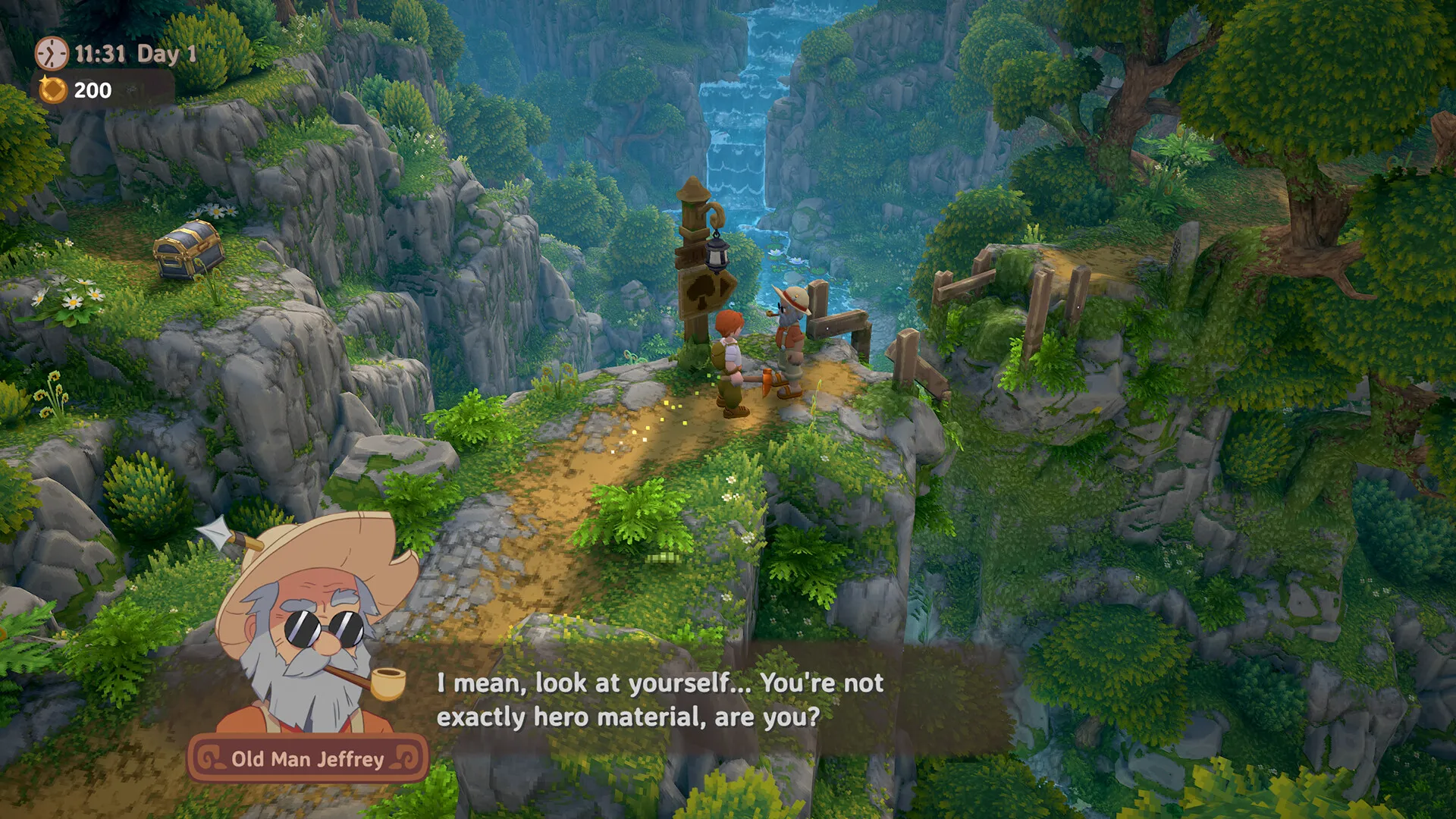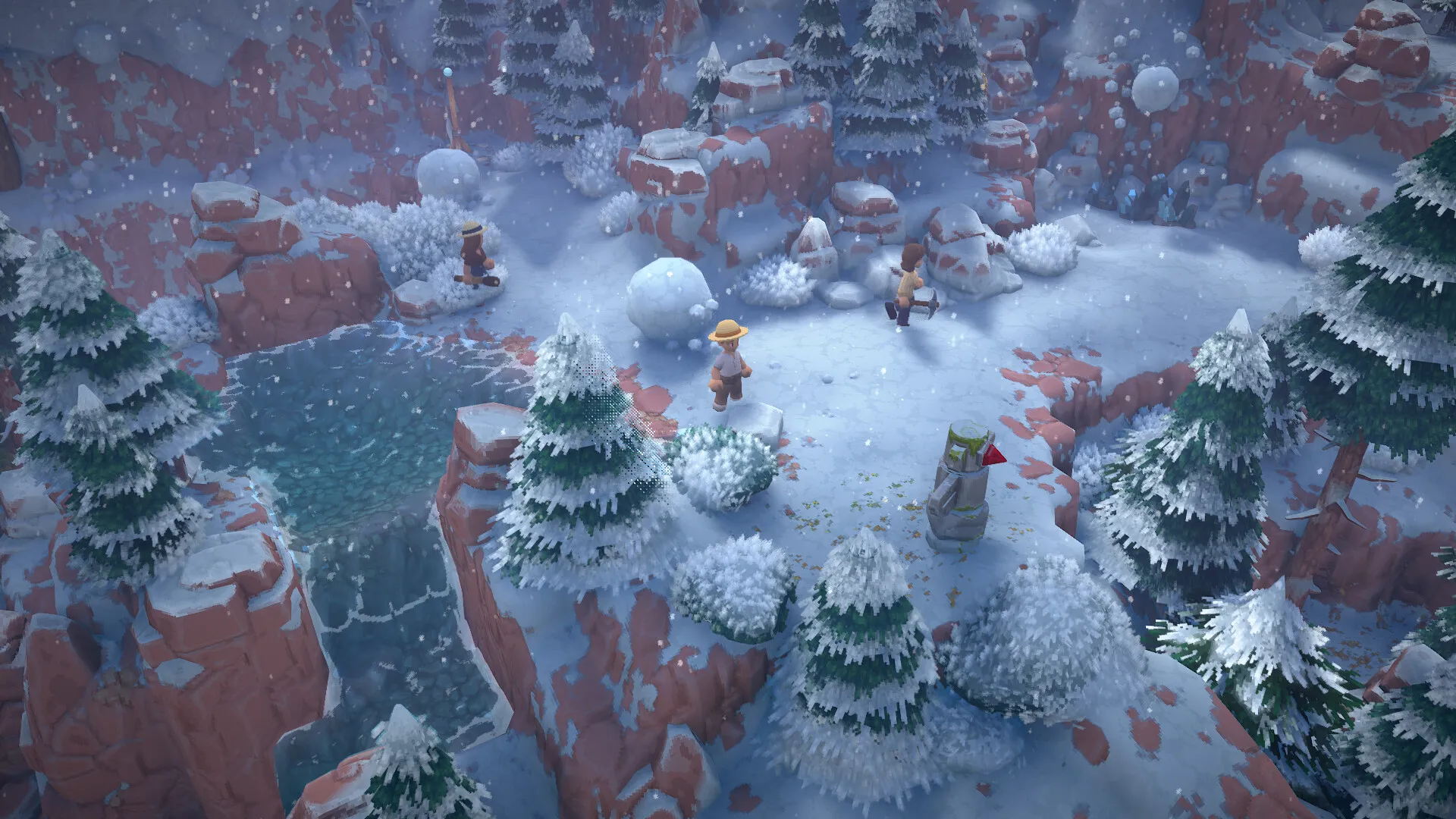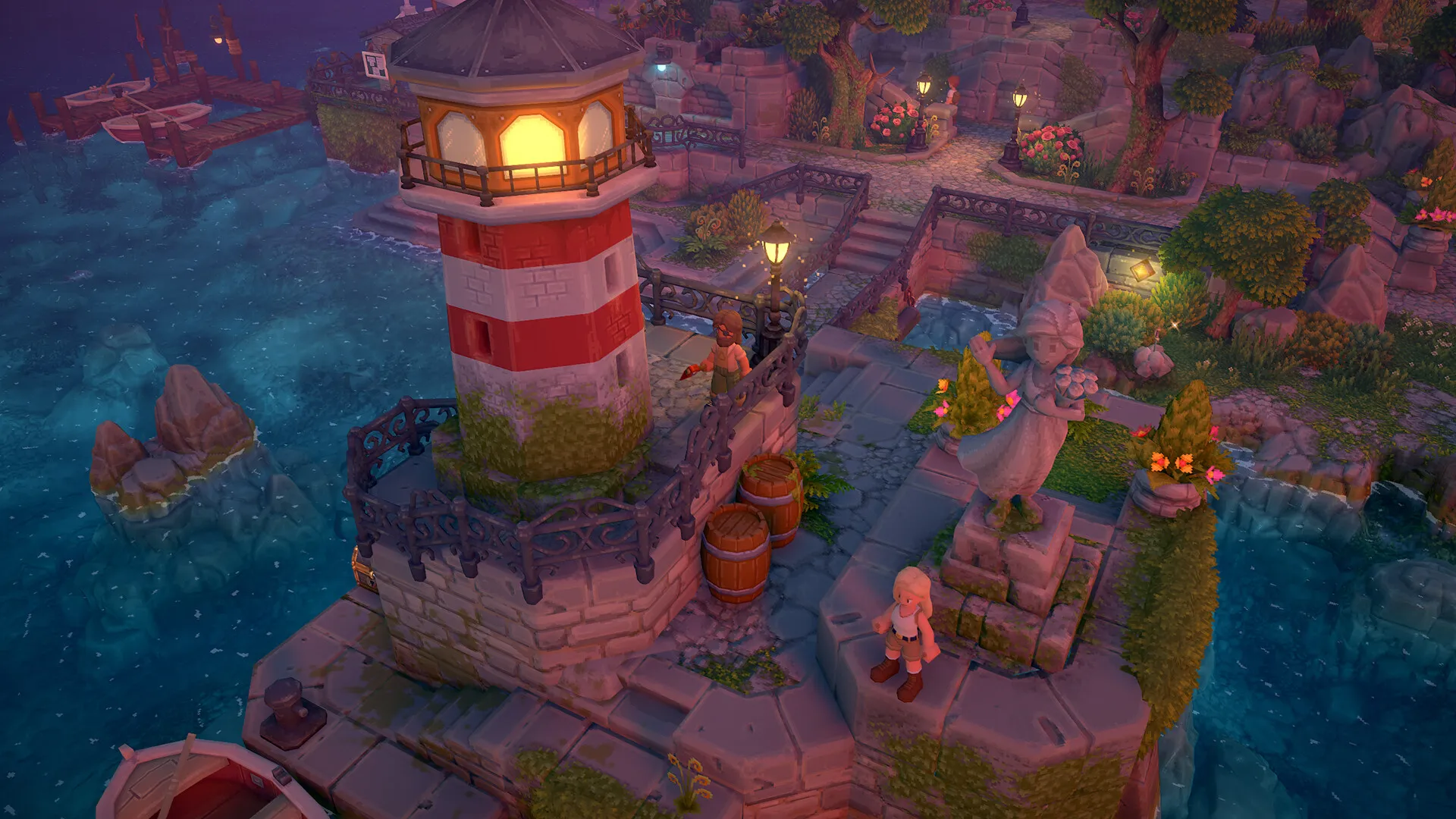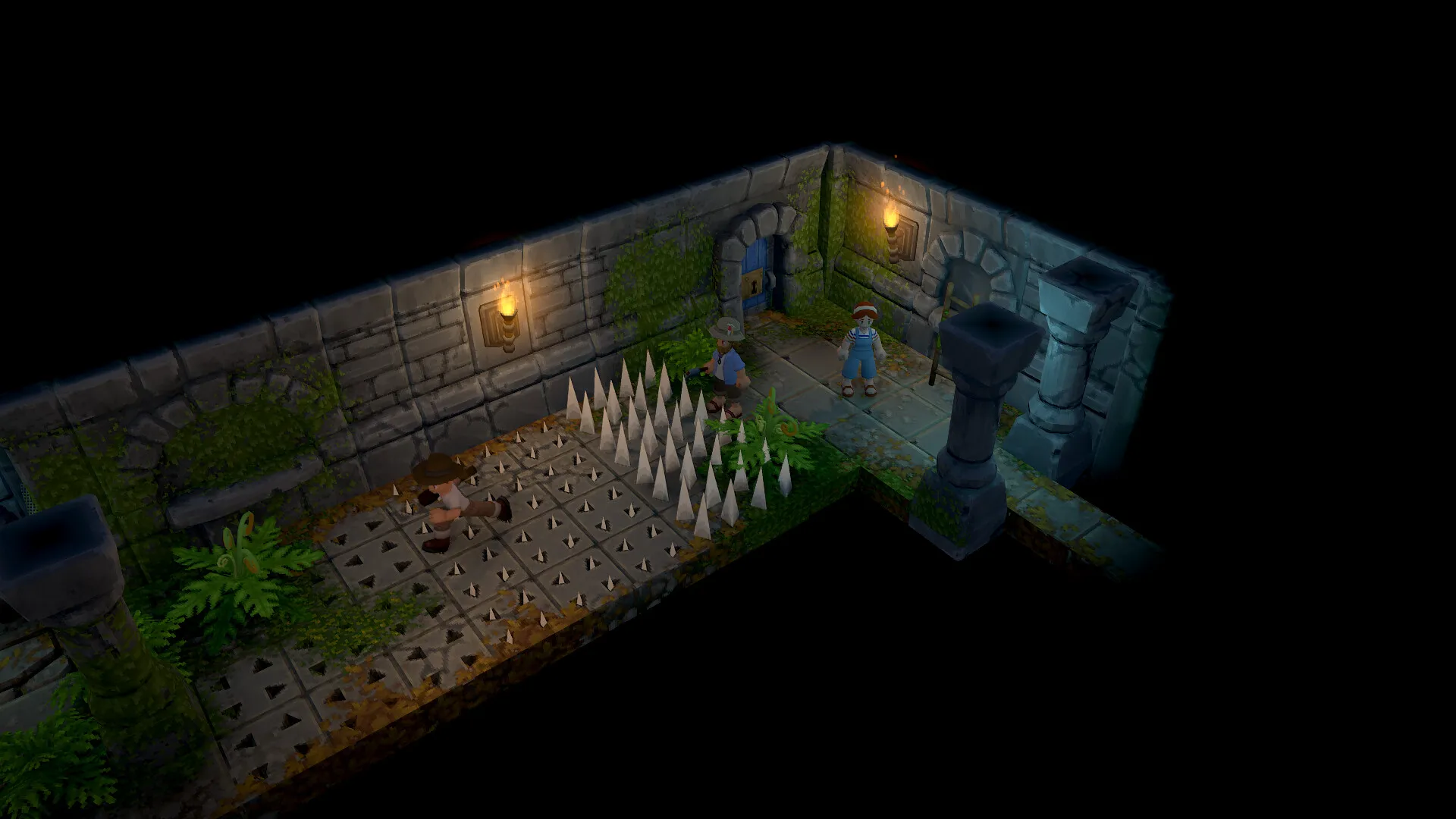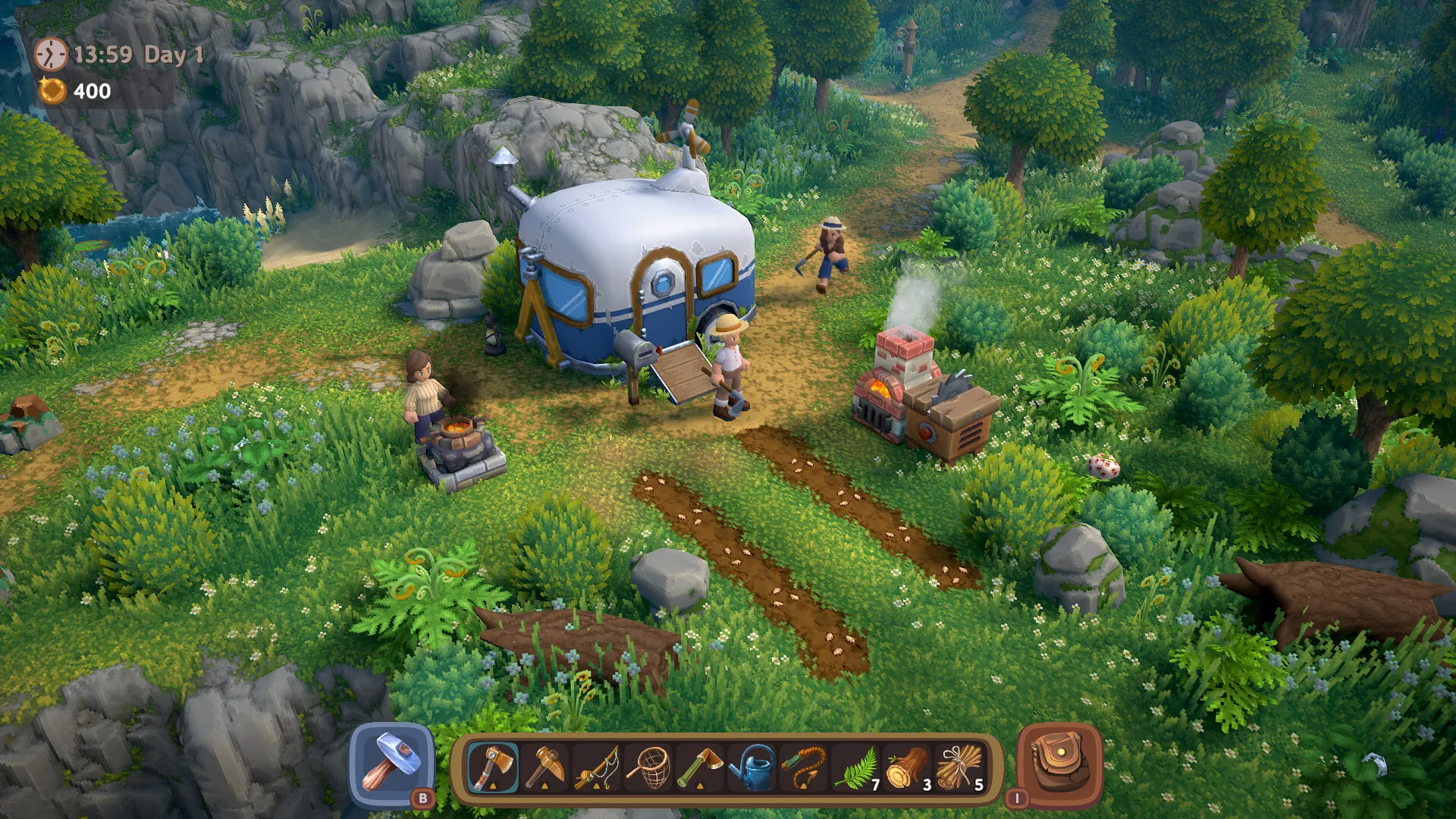The farming mechanics in Luma Island are intuitive, allowing players to simply engage in resource management, planting, and harvesting. Beginning with basic tools, players gradually unlock improvements and layer options that deepen their experience.
This strategy promotes a sense of accomplishment by promoting personal growth and community development. As players contribute to the island’s regeneration, each crop gathered, or item created serves gameplay progression and enriches the narrative.
Exploration is a centrepiece of “Luma Island,” with different settings inviting players to discover hidden treasures and quests. The design invites exploration, yet the lack of a compass may occasionally lead to disorientation.
Interactions with NPCs improve immersion since each character provides unique quests that deepen the lore. Decisions on who to assist with sequences and story outcomes significantly impact exploration. This mix of physics and narrative elevates Luma Island, making each option feel relevant inside its vibrant world.
Crafting Identity in Luma Island: Customization and Professions
“Luma Island” has a simple character creation system that allows players to select their gender and appearance. While the options may appear restricted, their simplicity allows players to immerse themselves in the game world immediately.
Customization is important not only for its visual value but also for instilling a sense of ownership and connection to the character. This personal involvement enhances the emotional layer, encouraging players to engage more intimately with the narrative and the community they’re helping to rebuild.
The game features seven vocations, ranging from cook to treasure hunter, each with unique gameplay mechanics and challenges. This variability enables players to personalize their experience based on their desired playstyle. For example, picking the treasure hunter career introduces players to exploration and puzzle-solving features, whereas the culinary profession focuses on resource management and crafting.
The impact of career selection is significant; it affects not only gameplay mechanics but also interactions with NPCs and the storyline. Players are encouraged to take diverse pathways, reflecting the game’s central themes of growth and discovery. This multidimensional approach to character development enriches the narrative, making decisions feel important and resonant in the larger context of Luma Island’s vibrant world.
Unraveling the Tapestry: Story and Lore in Luma Island
“Luma Island” invites players into a narrative that deviates from standard farming sim themes. It forsakes the familiar backstory of a life in need of resuscitation. Instead, players are immersed in an ancient prophecy entwined with the island’s supernatural events.
The quests are designed to advance the narrative and promote character growth and player participation. Each activity, whether solving puzzles in ancient temples or assisting eccentric inhabitants, serves as a conduit for further exploration of the island’s mysteries and the protagonist’s adventure.
These well-crafted quests blend personal stakes with overarching themes of repair and community. Players become invested in the outcomes because decisions made during quests influence relationships with NPCs and the broader direction of the story. The humour interwoven throughout the language lends a cheerful touch, making even the most important quests feel approachable and enjoyable.
Luma Island’s rich history is intertwined throughout the game, adding to the immersive experience. Lore is conveyed through contextual storytelling, NPC interactions, and the discovery of artefacts, enabling players to delve further into the narrative. This layered approach to storytelling is reminiscent of indie RPGs like “Stardew Valley,” in which players discover the past while creating their future.
Understanding the island’s lore not only enriches the gameplay but also increases emotional commitment, allowing players to feel like active participants in a living story. The incorporation of lore into gameplay elements, such as investigating ruins to unlock new places, ensures that players are consistently rewarded for their curiosity. In “Luma Island,” the narrative is more than simply a backdrop; it is an integral component of the gameplay experience, making each discovery feel significant and profound.
Aesthetic Journey: Visuals and Audio in Luma Island
“Luma Island” captivates players with its vibrant, pixelated art style, which is reminiscent of classic indie games like “MySims” and “Rune Factory.” The colour scheme is rich and inviting, with lush greens, brilliant blues, and warm earth tones that convey a sense of nostalgia while keeping a contemporary appeal.
The character designs are appealing and eccentric, with a personality that enhances interactions. The different environments, which range from sun-drenched beaches to gloomy dungeons, are purposefully designed to encourage ageing exploration and involvement with the world.
This attention to detail not only enhances the island’s visual attractiveness but also reinforces the game’s themes of discovery and community. Each location feels alive, enticing players to discover its mysteries. The entire style successfully balances whimsy with a layer of adventure, creating an immersive experience that draws players in.
The auditory landscape of “Luma Island” enhances its visual appeal. While the soundtrack isn’t innovative, it does contain relaxing melodies that add to the game’s pleasant feel. Each track is well-suited to its surroundings, whether the players explore peaceful forests or navigate a bustling village. Sound effects, ranging from the subtle rustle of leaves to the satisfying lash of a whip, provide depth to the gameplay, making interactions feel more significant.
This sound design and music mix produce an emotional resonance consistent with the game’s narrative. The audio elements complement times of exploration and discovery, allowing players to fully immerse themselves in the experience. Overall, the visuals and audio work together to create a gripping ambience, inviting players to immerse themselves in the enchanting world of Luma Island.
Together We Thrive: The Multiplayer Experience in Luma Island
“Luma Island” features a complex multiplayer layer system that dramatically enhances gameplay dynamics. Players can collaborate with friends to explore the island’s various biomes, complete quests, and discover secret treasures.
This cooperative method adds layers of complexity by allowing players to divide chores based on their chosen professions—cooks can prepare meals that increase adventurers’ stamina. At the same time, treasure hunters can lead the group through dangerous ruins. The game’s architecture emphasizes collaboration, with several challenges requiring teamwork, making each exploration feel more exciting and gratifying.
This multiplayer component makes gameplay more enjoyable and transforms the experience into a shared adventure, reminiscent of games like Stardew Valley, where community is vital to progress. Players can visit each other’s farms, participate in crafting, or simply enjoy the island’s peaceful beauty, establishing a sense of community and connection.
In Luma Island, the social components of the multiplayer layer deepen the overall experience, transforming it into a thriving community hub. Role-playing opportunities abound, as players may embody their characters and engage with the layer meaningfully. The playful interactions with NPCs are considerably more amusing when shared, as players may joke about their encounters or plan their next moves together.
This shared setting reinforces the game’s ideas of cooperation and friendship, making each decision feel more important. Engaging socially adds an emotional layer to the gameplay, increasing player commitment to their character’s journey and relationships with others. In a genre frequently dominated by solo play, “Luma Island” creates a vibrant, interactive world where friendships bloom alongside farming and adventure.
Enigmatic Companions: The Role of Lumas in Luma Island
Lumas are beautiful friends on Luma Island, adding to the gameplay experience and promoting exploration. These mystical animals, which players can hatch from eggs, are designed to help with a variety of activities, like uncovering hidden treasures and giving Luma Energy for crafting. Their quirky looks and unique personalities add an additional layer of enchantment, enticing players to engage in the collecting aspect of the game.
Lumas can accompany players on expeditions by illuminating roads or alerting them to adjacent secrets. This system skillfully intertwines the narrative of discovery with the act of collecting, giving players a sense of purpose in fostering and gathering these species while simultaneously understanding the island’s lore.
Despite its innovative premise, Lumas’ effectiveness in “Luma Island” demonstrates several limitations. While they can uncover riches, their utility appears relatively limited. They frequently mimic the talents of more traditional pets like dogs or cats, calling into question their distinctiveness. Many players had hoped for more distinguishing skills that could influence gameplay in a variety of ways.
For example, rather than simply assisting in item location, Lumas might be modified to perform specialized duties dependent on their type, like a rabbit dealing with weeds or a horse enabling speedier travel. Because of this lack of difference, Lumas may feel like background pieces rather than vital parts of the gameplay.
Furthermore, player feedback suggests that Lumas’ role might be enhanced to deepen their impact on exploration and fighting. Enhancing their skills or inclusion into the main storyline may make collecting them feel more rewarding. While Lumas bring charm and a sense of friendship, there is still substantial opportunity for growth that may raise their role within the larger narrative of “Luma Island” as it stands.
Streamlined Gameplay: Quality of Life Features in Luma Island
The endless inventory concept introduced in Luma Island considerably enhances the gameplay experience. This feature frees players from the difficulties associated with inventory management in similar games, allowing them to focus on exploration and crafting instead of constantly juggling objects.
The absence of inventory restrictions allows a more flexible approach to resource collection, allowing players to freely acquire materials and prizes as they travel over the island. This design decision simplifies gameplay and reinforces the game’s themes of discovery and adventure.
One of the most refreshing parts of Luma Island is the absence of a stamina system. Players can engage in tasks like farming, exploring, and crafting without worrying about tiring their characters. This design choice encourages a more leisurely approach to gameplay, inviting casual players to enjoy the experience without worrying about their ageing energy levels.
Additionally, quality-of-life features such as streamlined controls and user-friendly interfaces improve accessibility. These characteristics make “Luma Island” inviting to new and experienced gamers, allowing them to immerse themselves in its charming world without undue complexity. Such intelligent design decisions lead to a smooth and enjoyable experience, allowing players to focus on the thrill of creating their ideal life on the islands.
The Review
Luma Island
"Luma Island" is a beautiful blend of farming simulation and adventure, providing players a charming world to explore while building important bonds with its inhabitants. The endless inventory concept and lack of endurance increase accessibility, making it enjoyable for casual and experienced gamers. While Lumas might benefit from more distinct roles, the fascinating quests and vibrant visuals create a compelling experience. Overall, it skillfully mixes relaxation and adventure, making it an excellent addition to the indie genre.
PROS
- Engaging farming and crafting mechanics.
- Beautiful, vibrant art style with a nostalgic feel.
- Infinite inventory system enhances gameplay flow.
- Cooperative multiplayer experience enriches exploration.
- Relaxing absence of a stamina system.
CONS
- Lumas lack distinct abilities, feeling somewhat underutilized.
- Map navigation can be confusing without a compass.
- Some quests may feel repetitive over time.







































